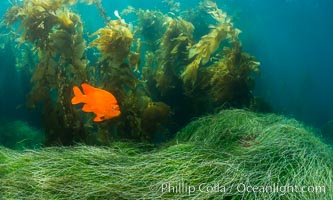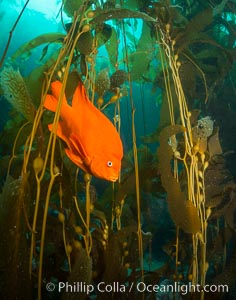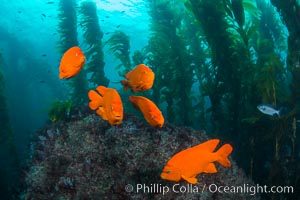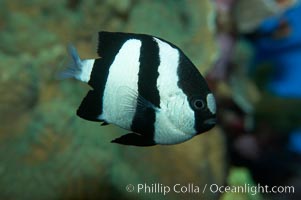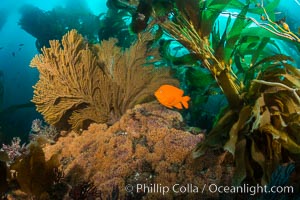
Garibaldi and golden gorgonian, bryozoans, with an underwater forest of giant kelp rising in the background, underwater.
Location: Catalina Island, California
Image ID: 34169
Location: Catalina Island, California
Image ID: 34169
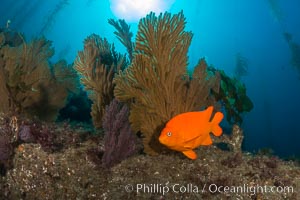
Garibaldi and golden gorgonian, with a underwater forest of giant kelp rising in the background, underwater.
Species: California golden gorgonian, Muricea californica
Location: Catalina Island, California
Image ID: 34216
Species: California golden gorgonian, Muricea californica
Location: Catalina Island, California
Image ID: 34216
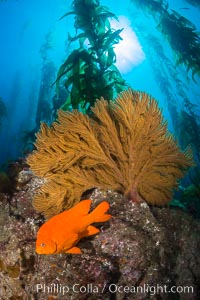
Garibaldi and golden gorgonian, with a underwater forest of giant kelp rising in the background, underwater.
Species: California golden gorgonian, Muricea californica
Location: Catalina Island, California
Image ID: 34218
Species: California golden gorgonian, Muricea californica
Location: Catalina Island, California
Image ID: 34218
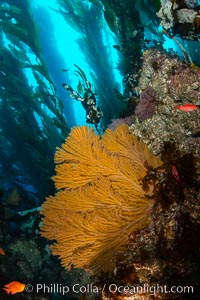
California golden gorgonian on underwater rocky reef, Catalina Island. The golden gorgonian is a filter-feeding temperate colonial species that lives on the rocky bottom at depths between 50 to 200 feet deep. Each individual polyp is a distinct animal, together they secrete calcium that forms the structure of the colony. Gorgonians are oriented at right angles to prevailing water currents to capture plankton drifting by. Catalina Island, California, USA.
Species: California golden gorgonian, Muricea californica
Location: Catalina Island, California
Image ID: 34622
Species: California golden gorgonian, Muricea californica
Location: Catalina Island, California
Image ID: 34622
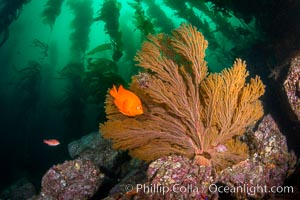
California golden gorgonian on underwater rocky reef, Catalina Island. The golden gorgonian is a filter-feeding temperate colonial species that lives on the rocky bottom at depths between 50 to 200 feet deep. Each individual polyp is a distinct animal, together they secrete calcium that forms the structure of the colony. Gorgonians are oriented at right angles to prevailing water currents to capture plankton drifting by. Catalina Island, California, USA.
Species: California golden gorgonian, Muricea californica
Location: Catalina Island, California
Image ID: 34624
Species: California golden gorgonian, Muricea californica
Location: Catalina Island, California
Image ID: 34624
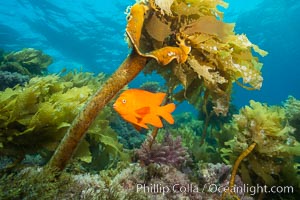
Garibaldi swimming through southern sea palm, San Clemente Island.
Species: Garibaldi, Southern sea palm, Eisenia arborea, Hypsypops rubicundus
Location: San Clemente Island, California
Image ID: 30877
Species: Garibaldi, Southern sea palm, Eisenia arborea, Hypsypops rubicundus
Location: San Clemente Island, California
Image ID: 30877
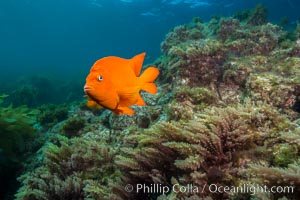
Garibaldi and Asparagopsis taxiformis (red marine algae), San Clemente Island.
Species: Garibaldi, Asparagopsis taxiformis, Hypsypops rubicundus
Location: San Clemente Island, California
Image ID: 30882
Species: Garibaldi, Asparagopsis taxiformis, Hypsypops rubicundus
Location: San Clemente Island, California
Image ID: 30882
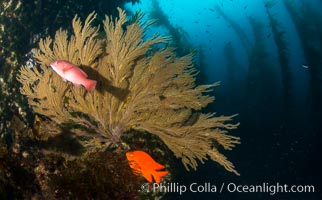
California golden gorgonian, Garibaldi and Sheephead wrasse fishes on rocky reef, below kelp forest, underwater. The golden gorgonian is a filter-feeding temperate colonial species that lives on the rocky bottom at depths between 50 to 200 feet deep. Each individual polyp is a distinct animal, together they secrete calcium that forms the structure of the colony. Gorgonians are oriented at right angles to prevailing water currents to capture plankton drifting by.
Species: California golden gorgonian, California sheephead wrasse, Garibaldi, Hypsypops rubicundus, Muricea californica, Semicossyphus pulcher
Location: San Clemente Island, California
Image ID: 30922
Species: California golden gorgonian, California sheephead wrasse, Garibaldi, Hypsypops rubicundus, Muricea californica, Semicossyphus pulcher
Location: San Clemente Island, California
Image ID: 30922
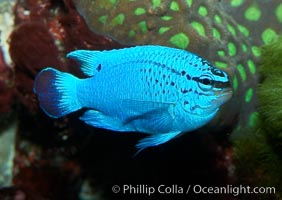
Sapphire devil (blue damselfish), female/juvenile coloration.
Species: Sapphire devil, Chrysiptera cyanea
Image ID: 11834
Species: Sapphire devil, Chrysiptera cyanea
Image ID: 11834

Panorama of the Minarets at sunrise, near Mammoth Mountain. The Minarets are a series of seventeen jagged peaks in the Ritter Range, west of Mammoth Mountain in the Ansel Adams Wilderness. These basalt peaks were carved by glaciers on both sides of the range. The highest of the Minarets stands 12,281 feet above sea level.
Location: Mammoth Lakes, California
Image ID: 19126
Panorama dimensions: 3249 x 29914
Location: Mammoth Lakes, California
Image ID: 19126
Panorama dimensions: 3249 x 29914
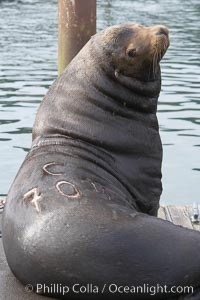
A bull sea lion shows a brand burned into its hide by the Oregon Department of Fish and Wildlife, to monitor it from season to season as it travels between California, Oregon and Washington. Some California sea lions, such as this one C-704, prey upon migrating salmon that gather in the downstream waters and fish ladders of Bonneville Dam on the Columbia River. The "C" in its brand denotes Columbia River. These sea lions also form bachelor colonies that haul out on public docks in Astoria's East Mooring Basin and elsewhere, where they can damage or even sink docks.
Species: California sea lion, Zalophus californianus
Location: Columbia River, Astoria, Oregon
Image ID: 19419
Species: California sea lion, Zalophus californianus
Location: Columbia River, Astoria, Oregon
Image ID: 19419
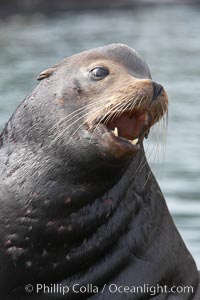
Sea lion head profile, showing small external ear, prominant forehead typical of adult males, whiskers. This sea lion is hauled out on public docks in Astoria's East Mooring Basin. This bachelor colony of adult males takes up residence for several weeks in late summer on public docks in Astoria after having fed upon migrating salmon in the Columbia River. The sea lions can damage or even sink docks and some critics feel that they cost the city money in the form of lost dock fees.
Species: California sea lion, Zalophus californianus
Location: Columbia River, Astoria, Oregon
Image ID: 19420
Species: California sea lion, Zalophus californianus
Location: Columbia River, Astoria, Oregon
Image ID: 19420
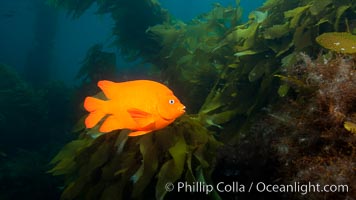
Garibaldi fish on kelp forest reef, underwater.
Species: Garibaldi, Hypsypops rubicundus
Location: San Clemente Island, California
Image ID: 25409
Species: Garibaldi, Hypsypops rubicundus
Location: San Clemente Island, California
Image ID: 25409
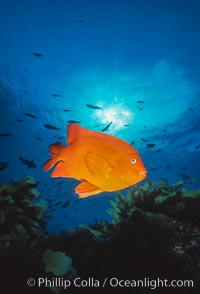
Garibaldi.
Species: Garibaldi, Hypsypops rubicundus
Location: San Clemente Island, California
Image ID: 00635
Species: Garibaldi, Hypsypops rubicundus
Location: San Clemente Island, California
Image ID: 00635
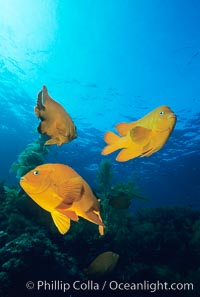
Garibaldi.
Species: Garibaldi, Hypsypops rubicundus
Location: San Clemente Island, California
Image ID: 01060
Species: Garibaldi, Hypsypops rubicundus
Location: San Clemente Island, California
Image ID: 01060
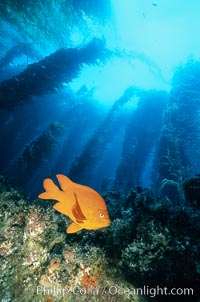
Garibaldi in kelp forest.
Species: Garibaldi, Hypsypops rubicundus
Location: San Clemente Island, California
Image ID: 03453
Species: Garibaldi, Hypsypops rubicundus
Location: San Clemente Island, California
Image ID: 03453
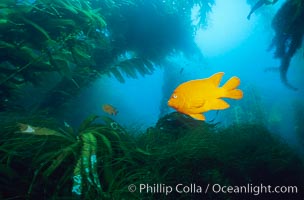
Garibaldi swimming over surfgrass in kelp forest.
Species: Garibaldi, Hypsypops rubicundus, Macrocystis pyrifera, Phyllospadix
Location: San Clemente Island, California
Image ID: 06274
Species: Garibaldi, Hypsypops rubicundus, Macrocystis pyrifera, Phyllospadix
Location: San Clemente Island, California
Image ID: 06274
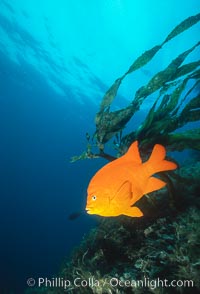
Garibaldi.
Species: Garibaldi, Hypsypops rubicundus
Location: Catalina Island, California
Image ID: 02506
Species: Garibaldi, Hypsypops rubicundus
Location: Catalina Island, California
Image ID: 02506
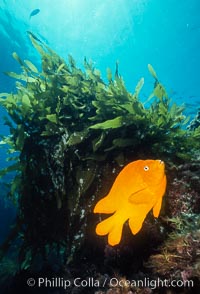
Garibaldi.
Species: Garibaldi, Hypsypops rubicundus
Location: Catalina Island, California
Image ID: 02507
Species: Garibaldi, Hypsypops rubicundus
Location: Catalina Island, California
Image ID: 02507
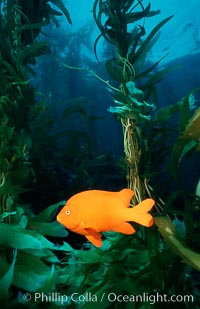
Garibaldi and kelp forest.
Species: Garibaldi, Hypsypops rubicundus, Macrocystis pyrifera
Location: San Clemente Island, California
Image ID: 02509
Species: Garibaldi, Hypsypops rubicundus, Macrocystis pyrifera
Location: San Clemente Island, California
Image ID: 02509
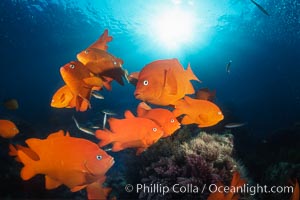
Garibaldi, Coronado Islands.
Species: Garibaldi, Hypsypops rubicundus
Location: Coronado Islands (Islas Coronado), Baja California, Mexico
Image ID: 02511
Species: Garibaldi, Hypsypops rubicundus
Location: Coronado Islands (Islas Coronado), Baja California, Mexico
Image ID: 02511
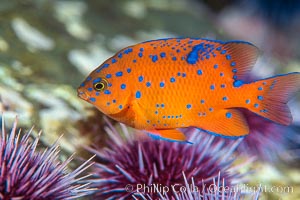
Juvenile garibaldi and purple urchins, Coronado Islands.
Species: Garibaldi, Hypsypops rubicundus, Strongylocentrotus purpuratus
Location: Coronado Islands (Islas Coronado), Baja California, Mexico
Image ID: 02513
Species: Garibaldi, Hypsypops rubicundus, Strongylocentrotus purpuratus
Location: Coronado Islands (Islas Coronado), Baja California, Mexico
Image ID: 02513
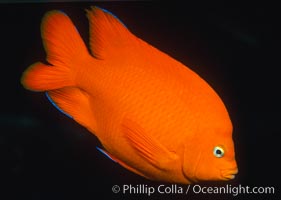
Garibaldi with a tiny bit of juvenile blue coloration.
Species: Garibaldi, Hypsypops rubicundus
Location: California
Image ID: 02514
Species: Garibaldi, Hypsypops rubicundus
Location: California
Image ID: 02514
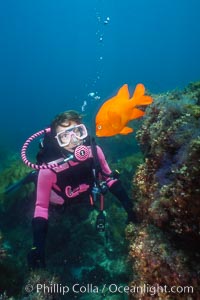
Diver and garibaldi.
Species: Garibaldi, Hypsypops rubicundus
Location: Catalina Island, California
Image ID: 02989
Species: Garibaldi, Hypsypops rubicundus
Location: Catalina Island, California
Image ID: 02989
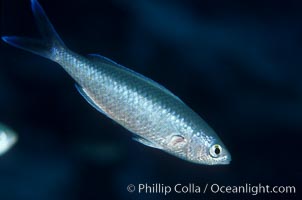
Swallowtail damselfish.
Species: Swallowtail damselfish, Azurina hirundo
Location: Guadalupe Island (Isla Guadalupe), Baja California, Mexico
Image ID: 05064
Species: Swallowtail damselfish, Azurina hirundo
Location: Guadalupe Island (Isla Guadalupe), Baja California, Mexico
Image ID: 05064
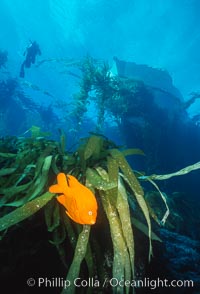
Garibaldi.
Species: Garibaldi, Hypsypops rubicundus
Location: San Clemente Island, California
Image ID: 05075
Species: Garibaldi, Hypsypops rubicundus
Location: San Clemente Island, California
Image ID: 05075
